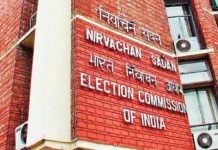 TOPIC – Lend a hand
TOPIC – Lend a hand
“RBI measures to ease to healthflows sector, small businesses are welcome. Greater government support is needed.”
On Wednesday, RBI Governor Shaktikanta Das announced a slew of measures aimed at lessening the financial stress in the economy. The announcements, which come at a time of acute economic uncertainty, amid a wave of infections that is yet to peak, are designed to boost the flow of funds to the healthcare sector, and ease the pain of small businesses and individuals — parts of the economy that are most at risk. By doing so, the governor has sent a clear signal — all possible policy support will be extended to the economy as the fallout from the second wave of infections intensifies. The central bank has provided an on-tap liquidity window, allowing banks to borrow Rs 50,000 crore at the repo rate for lending to the health care sector. This lending will encompass vaccine manufacturers, suppliers of medical devices, oxygen and ventilators, and hospitals, among others. By allowing these loans to be classified as priority sector lending, the RBI is incentivising banks to ramp up support to the sector during these troubled times. Credit to small businesses and retail borrowers is also being incentivised through two channels. First, small finance banks have been provided the option of borrowing Rs 10,000 crore at the repo rate which can then be used for lending up to Rs 10 lakh per borrower. And second, these banks have been allowed to classify lending to microfinance as priority sector lending. Considering that during this period of stress, cash flows of businesses are likely to come under pressure as economic activity limps, the RBI has also announced a resolution framework for small businesses, MSMEs and individuals to allow them to restructure their obligations. However, this scheme has been extended to those who had not availed of the earlier restructuring scheme. Alongside, the RBI also announced the second tranche of its government securities acquisition programme (G-SAP) of Rs 35,000 crore which is part of its stated commitment of Rs 1 lakh crore. For state governments, which are likely to face a mismatch between their revenues and spending in the near term, the central bank has eased their overdraft limits, allowing them greater access to funds to fulfil their expenditure priorities. The number of days states can be in overdraft has been increased from 36 days currently to 50 days now, providing them with greater flexibility to manage their borrowings. Considering the ferocity of the second wave, and its yet uncertain economic fallout, it is reasonable to expect more steps by the central bank. The government too has announced some relief measures — the Centre recently announced the provision of 5 kg of foodgrain to the poor under the Pradhan Mantri Garib Kalyan Anna Yojana for the months of May and June. However, considering the gravity of the situation, and given that large parts of the economy were yet to recover to pre-COVID levels even before the second wave hit, far greater support is required from all levels of government.
















